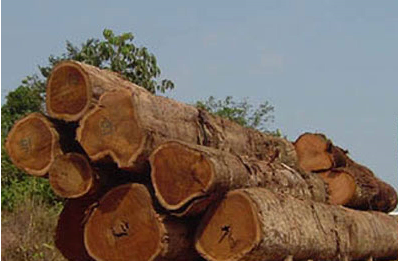
The Amazon region on its own accounts for 39% of all the world’s tropical rainforest. Certain types of wood, known for their resistance to moisture, are particularly sought-after in the building industry, with European importers increasingly interested in Brazilian timber from traceable sources and certified by the IBAMA. A barometer of the appetite for this resource is the boom in traffic over the past year on Marfret’s South America service, which carries the timber to Europe’s Northern Range ports.
Between 40 and 50 high-cube containers stuffed with timber planks are loaded onto Marfret’s South America service ships every Monday at the Brazilian port of Vila do Conde.
“Business is thriving thanks to a booming market. We have seen a 50% increase in volumes over 2018. Due to sourcing and traceability issues in the African market, European importers are increasingly turning to Brazil for supplies,” says Patrice Le Bras, Marfret’s South America line sales manager.
The service uses two container ships, the Marfret Guyane and Marajo, which leave the Amazon port with loads consisting of 90% timber and 10% palm oil. The wood is shipped to Vila do Conde by river barge and cut into timber, treated and dried in one of the many sawmills around the port area before being stuffed into the containers.
Rouen buffer stock
Around 60% of the timber is offloaded in Le Havre, home to many timber importers, and the remaining 40% in Antwerp and Rotterdam.
“Our Fluvio-Feeder barge service transfers the containers to Rouen where the containers are unstuffed into a warehouse. The timber is then reloaded onto tilt trailers for delivery to La Pallice for example. Deliveries are made according to the clients’ requirements,” explains Le Bras.
The Amazon rainforest in Brazil covers 520 million hectares. Among the many types of wood present (rosewood, mahogany…) some are particularly sought-after in the building trade for their resistance to moisture.
Decking made from roble and tonka wood are often seen around pools and on terraces, likewise massaranduba, particularly valued for its reddish colours. Others may prefer the yellow tones of tatajuba, while itauba is becoming more and more popular for exterior use.
(*)IBAMA: Brazilian Institute of the Environment and Renewable Natural Resources.
itions favouring Brazilian timber exports
The Amazon region on its own accounts for 39% of all the world’s tropical rainforest. Certain types of wood, known for their resistance to moisture, are particularly sought-after in the building industry, with European importers increasingly interested in Brazilian timber from traceable sources and certified by the IBAMA. A barometer of the appetite for this resource is the boom in traffic over the past year on Marfret’s South America service, which carries the timber to Europe’s Northern Range ports.
Between 40 and 50 high-cube containers stuffed with timber planks are loaded onto Marfret’s South America service ships every Monday at the Brazilian port of Vila do Conde.
“Business is thriving thanks to a booming market. We have seen a 50% increase in volumes over 2018. Due to sourcing and traceability issues in the African market, European importers are increasingly turning to Brazil for supplies,” says Patrice Le Bras, Marfret’s South America line sales manager.
The service uses two container ships, the Marfret Guyane and Marajo, which leave the Amazon port with loads consisting of 90% timber and 10% palm oil. The wood is shipped to Vila do Conde by river barge and cut into timber, treated and dried in one of the many sawmills around the port area before being stuffed into the containers.
Rouen buffer stock
Around 60% of the timber is offloaded in Le Havre, home to many timber importers, and the remaining 40% in Antwerp and Rotterdam.
“Our Fluvio-Feeder barge service transfers the containers to Rouen where the containers are unstuffed into a warehouse. The timber is then reloaded onto tilt trailers for delivery to La Pallice for example. Deliveries are made according to the clients’ requirements,” explains Le Bras.
The Amazon rainforest in Brazil covers 520 million hectares. Among the many types of wood present (rosewood, mahogany…) some are particularly sought-after in the building trade for their resistance to moisture.
Decking made from roble and tonka wood are often seen around pools and on terraces, likewise massaranduba, particularly valued for its reddish colours. Others may prefer the yellow tones of tatajuba, while itauba is becoming more and more popular for exterior use.
(*)IBAMA: Brazilian Institute of the Environment and Renewable Natural Resources.